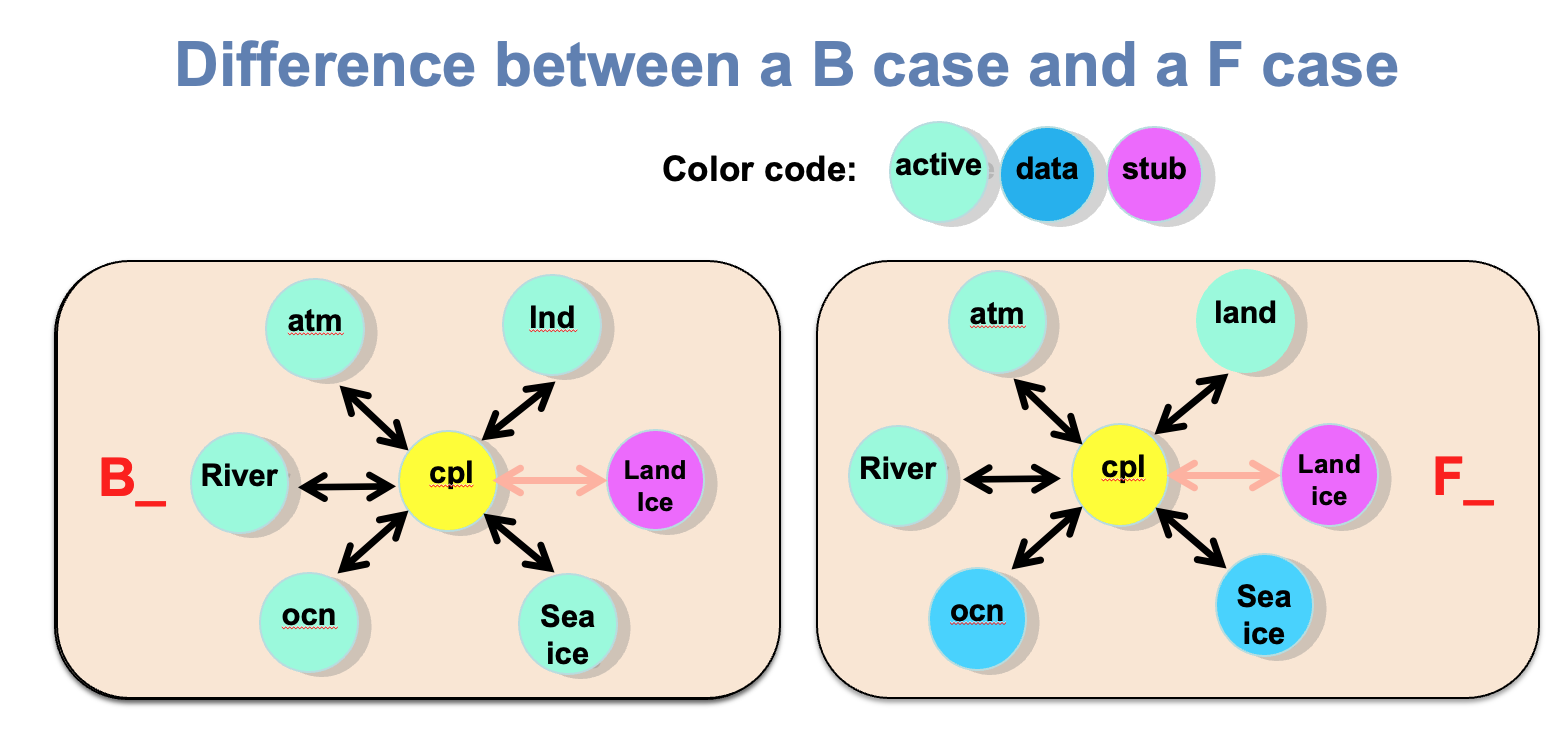Atmosphere#
Learning Goals#
Student will learn what a F compset is, the types of forcing available to run one, and how to run one.
Student will learn how to modify datasets using nco operators.
What is a F compset ?#
The CESM2 components can be combined in numerous ways to carry out various scientific or software experiments. A particular mix of components, along with component-specific configuration and/or namelist settings is called a component set or compset.
In the previous chapter, we have run experiments with the B compset. In this chapter we will run the experiments with the F compset.
The F compsets use prescribed ocean (observed sea-surface temperature data) and prescribed sea-ice (observed sea-ice thickness and area)
F2000climouses climatological forcings from around year 2000F2010climouses climatological forcings from around year 2010FHISTuse time varying forcing

Figure: Differences between a F and a B compset.
Overview of CAM Challenge Exercises#
Start running a control case with the compset F2000climo
Then choose one or more exercises to try:
Use historical SSTs/forcings instead of fixed (compset change)
Try running starting 1850 with spun-up pre-industrial model
Increase orographic height over the western US (dataset change)
Modify sea surface temperature in the tropics
Increase the triggering threshold for deep convection over land (code change–simple)
Add a (fake) physics parameterization (code change–advanced)
Compare your test exercise(s) to your control
Finding more information about compsets#
If you want to run a different configuration from what you’ve learned here, it is important to learn how to find and/or modify a compset.
The tool query compsets allows you to find more information about the available. This tool is located in the same directory as create_newcase in /glade/u/home/$USER/code/my_cesm_code/cime/scripts/:
The command is:
cd /glade/u/home/$USER/code/my_cesm_code/cime/scripts/
./query_config --compsets
Using the tool above and/or web searches below, find a CESM compset with an active atmosphere version cam6.0, that uses historical forcing data including sea surface temperatures. If you find several candidates, look at the components option and/or webpage to decide. Is it scientifically validated? For what resolutions?
Click here for the solution
The command gives a list of all the compsets available, and what components are included.
cd /glade/u/home/$USER/code/my_cesm_code/cime/scripts/
./query_config --compsets
This can show exactly what you ran before, and what is possible. To narrow down your choices:
./query_config --compsets | grep -i hist
If you want to build your own, you can see all your options, perhaps modify one of the above with changes
./query_config --components
More explanation about compsets can be found in the docs:
https://www.cesm.ucar.edu/models/cesm2/config/compsets.html
There are a number of atmospheric models which can run within CESM. While CAM is the basic atmospheric model within CESM, there are several models with significant extensions to CAM which may also be run within CESM. The available atmospheric models in CESM2 are:
CAM: Community Atmosphere Model
CAM-chem: Community Atmosphere Model with Chemistry
WACCM: Whole Atmosphere Community Climate Model
WACCM-X: Whole Atmosphere Community Climate Model with thermosphere and ionosphere extension
https://ncar.github.io/CAM/doc/build/html/users_guide/atmospheric-configurations.html
